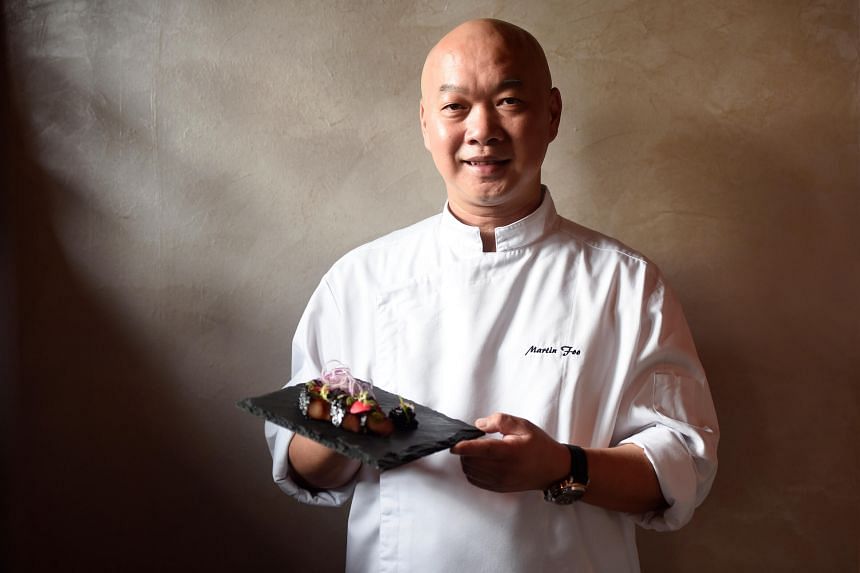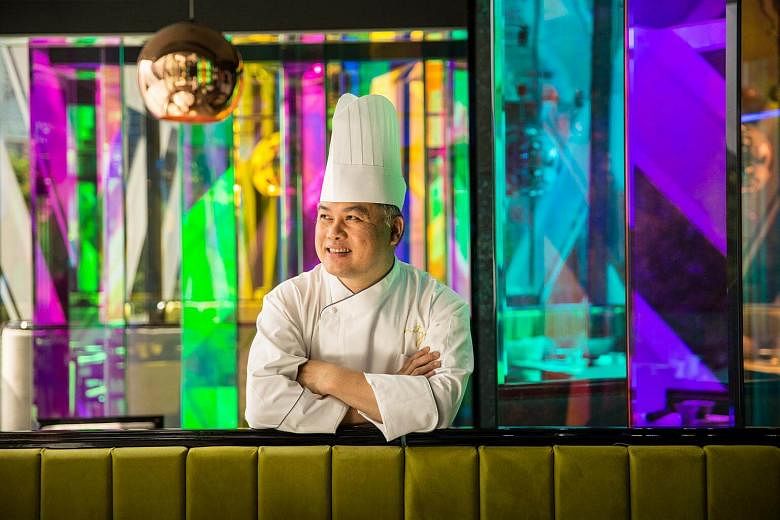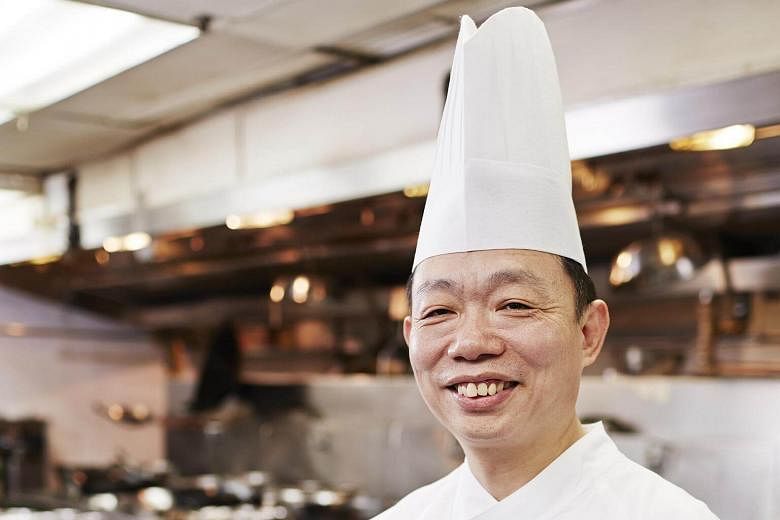SINGAPORE (THE BUSINESS TIMES) -
Yong Bing Ngen

Chef-Owner of Majestic Restaurant
"My celebration begins after 11pm on the eve of CNY. After service, I tapao some yu sheng and pen cai, and try to get home before midnight. My wife will cook a bit, and my family will have our dinner and hand out angpows all the way into the new year. That's been my tradition since the restaurant opened in 2006.
It's very different from when I was growing up in a kampong in Malaysia. Times were simpler back then, and I loved the festive season because my Dad would buy us soft drinks. Plus, receiving angpows meant having money to spend. Of course this was over 40 years ago, so angpows contained coins, usually just 20 or 30 cents.
There's a simple salad I like to make for Chinese New Year, using mixed greens like lettuce or baby romaine, fruits like mangoes or pear, and the crackers found in yu sheng. The dressing uses the liquid from canned longans or pineapples, mustard or wasabi powder, lemon juice, honey, olive oil, black pepper, and green tea - one cup of water with two tea bags - all blended together. Taste and adjust, then pour it over the salad."
Martin Foo

Executive Head Chef of VLV Restaurant
"This year, the VLV Restaurant will be closed on Jan 28 and 29, but for me, I will still be cooking on both days as I prepare the meals for my family gatherings. We usually dine at my sisters' homes on the first and second day of Chinese New Year, then it's back to work on the third day.
One tradition I have every year is to make carrot cake from scratch for my friends and family, because in Hokkien, the name for carrot is cai tou which means good luck and sounds auspicious.
I remember as a child growing up in Singapore, we would always look forward to getting red packets and soft drinks at Chinese New Year. Plus my mom would make her special salt-baked chicken.
I have a quick traditional dessert recipe that's easy to make at home - a dried longan red date tea. Aside from the rich food we usually consume during the season, the weather is also generally hot so this dessert drink has a cooling effect. It can be drunk chilled or hot. I make mine with dried longan, red dates, lotus seed and lily bulb, just by boiling all the ingredients together over a stove for half an hour."
Nicky Ng

Executive Head Chef of Mitzo Restaurant & Bar
"I spend Chinese New Year with my wife and two kids. On the night of reunion dinner, Mitzo is usually busy, so I have my reunion lunch the next day instead. It's the same every year. My brothers and sisters will gather at my place for a belated reunion meal, usually prepared by me, then we will proceed with our house-visits and bai nian with our relatives and friends.
As a child, Chinese New Year has always been exciting. The family bonds over hearty meals and loud conversations - a tradition I always look forward to. One special dish in my household is my mother's Braised Mushroom and Sea Cucumber. Succulent and savoury, it is a simple and healthy dish that is suitable for the whole family especially the elderly.
First, soak dried shiitake mushrooms in water to soften them. Fry ginger and spring onion in oil. Then, ready a pot of water - add the fried ginger and spring onion together with chicken powder, sesame oil, oyster sauce, dark soy sauce and boil. Braise the sea cucumber and shiitake mushrooms in the broth then take them out. With the remaining broth, stir in cornstarch to thicken as a sauce. Pour this over the sea cucumber and mushrooms before serving."
Chung Lap Fai

Masterchef of Hua Ting Restaurant
"I usually work during the 15-day festive period, but if time permits, I sometimes plan visits back to Hong Kong where my parents and relatives still reside - usually after the frenetic 15 days.
I grew up in Hong Kong where Lunar New Year (also known as Spring festival) takes on a slightly different atmosphere due to the seasons. Back then it was also more traditional where a lot of significance is attached to new year customs. For instance I was very much involved in spring cleaning, as it alludes to sweeping away ill-fortune to make way for good luck in the coming year.
There's a tradition in Hong Kong where most families stir-fry seven types of vegetables as a healthy dish. This is typically done after the seventh day when feasting lessens. The key in this dish is to go easy on the seasoning, using only a small amount of oil and salt added to taste. I suggest using broccoli, asparagus, spinach, Chinese celery, Chinese cabbage, snow peas, and carrots - 50g of each. Heat oil in a wok on medium-high heat, stir-fry the carrots for two minutes, then add the remaining vegetables and stir-fry for two to three minutes. Add salt, mix well, and continue stir-frying until the vegetables are tender-crisp."
Chen Kentaro

Executive Chef at Shisen Hanten
"We will certainly find time as a family to gather and enjoy good food together, but I usually work through Chinese New Year at our flagship restaurant in Akasaka, Tokyo. I am third-generation Chinese, born and raised in Japan, so when growing up, my family's ritual is just to get together for a good meal. Since Chinese New Year is the most important of all Chinese festivals, every year my father and I make sure that the dining experience we deliver to guests during this period reflects and celebrates our Chinese heritage.
I also have fond memories of my years as a culinary student in Sichuan province, where I celebrated with my friends by watching fireworks and playing mahjong. In Japan we would feast on Osechi (traditional Japanese New Year food) as a family to welcome the new year, and most of the dishes symbolise prosperity, good fortune and health.
Try cooking somen (mee sua) in clear fish or chicken broth with a hint of yuzu juice. This is our go-to dish in Ja pan after eating heavily over the new year festivities because it is very light and good for an overworked stomach. In Singapore it might not be easy finding yuzu, so I would substitute it with lemon or lime."





